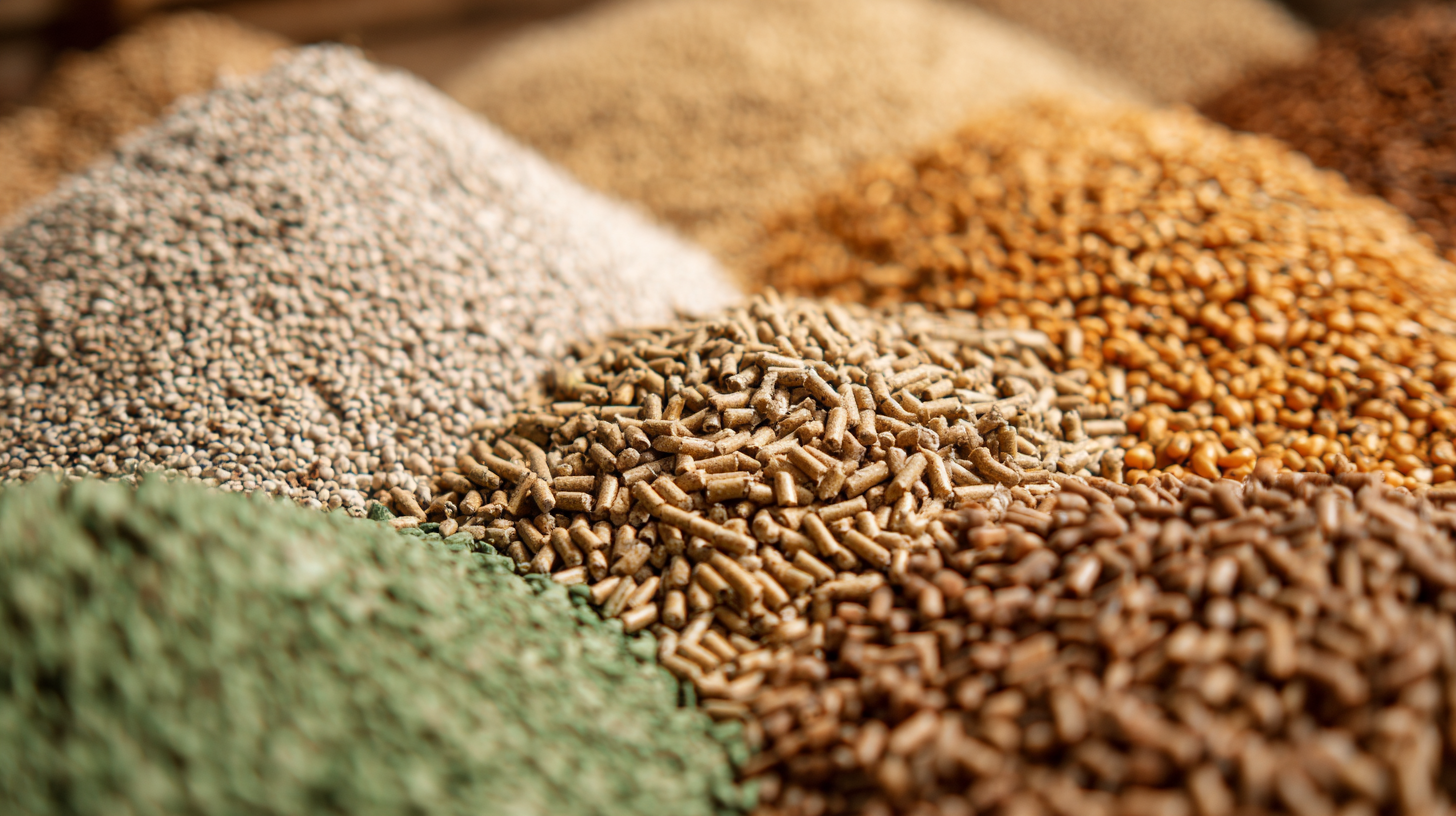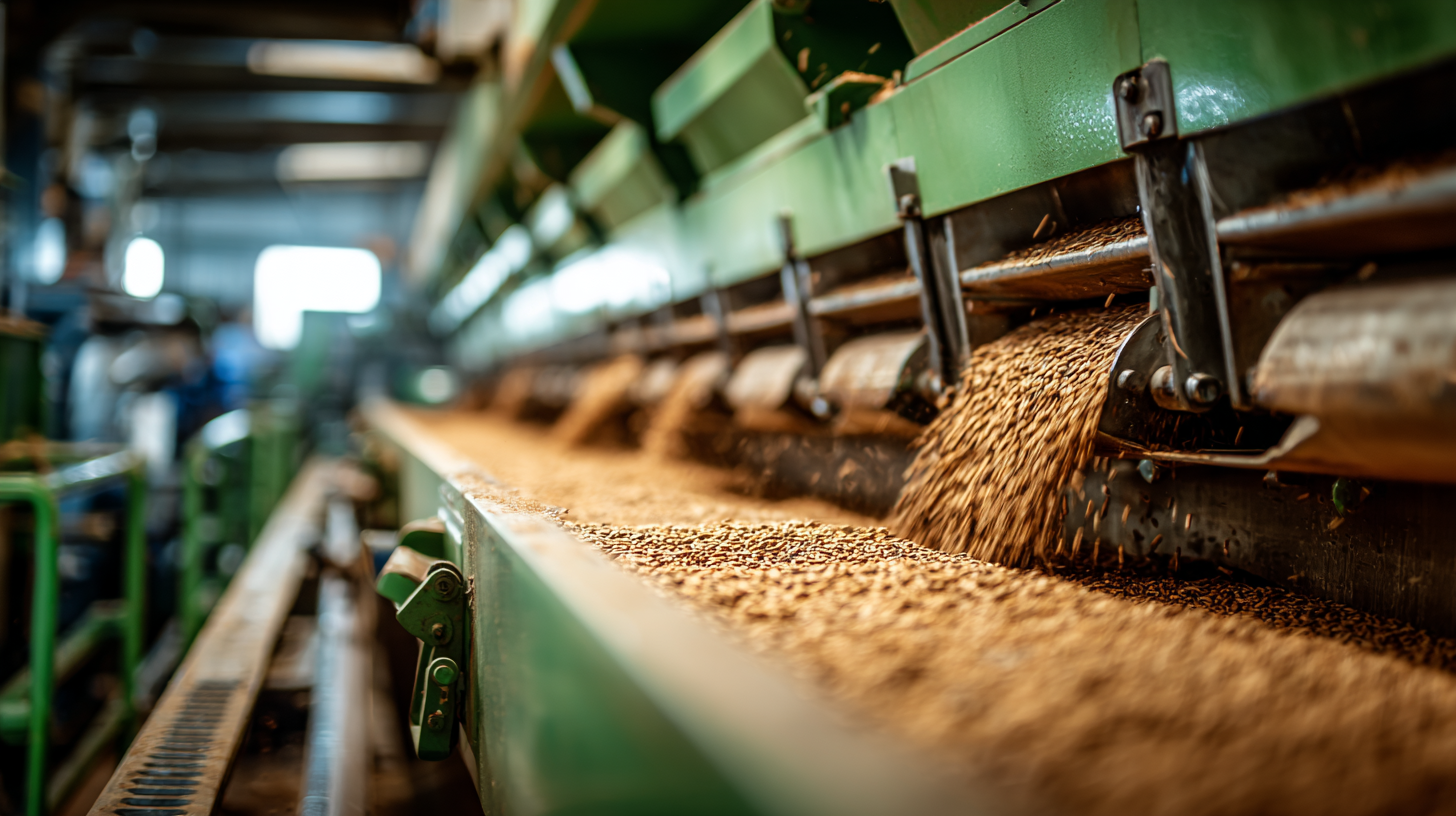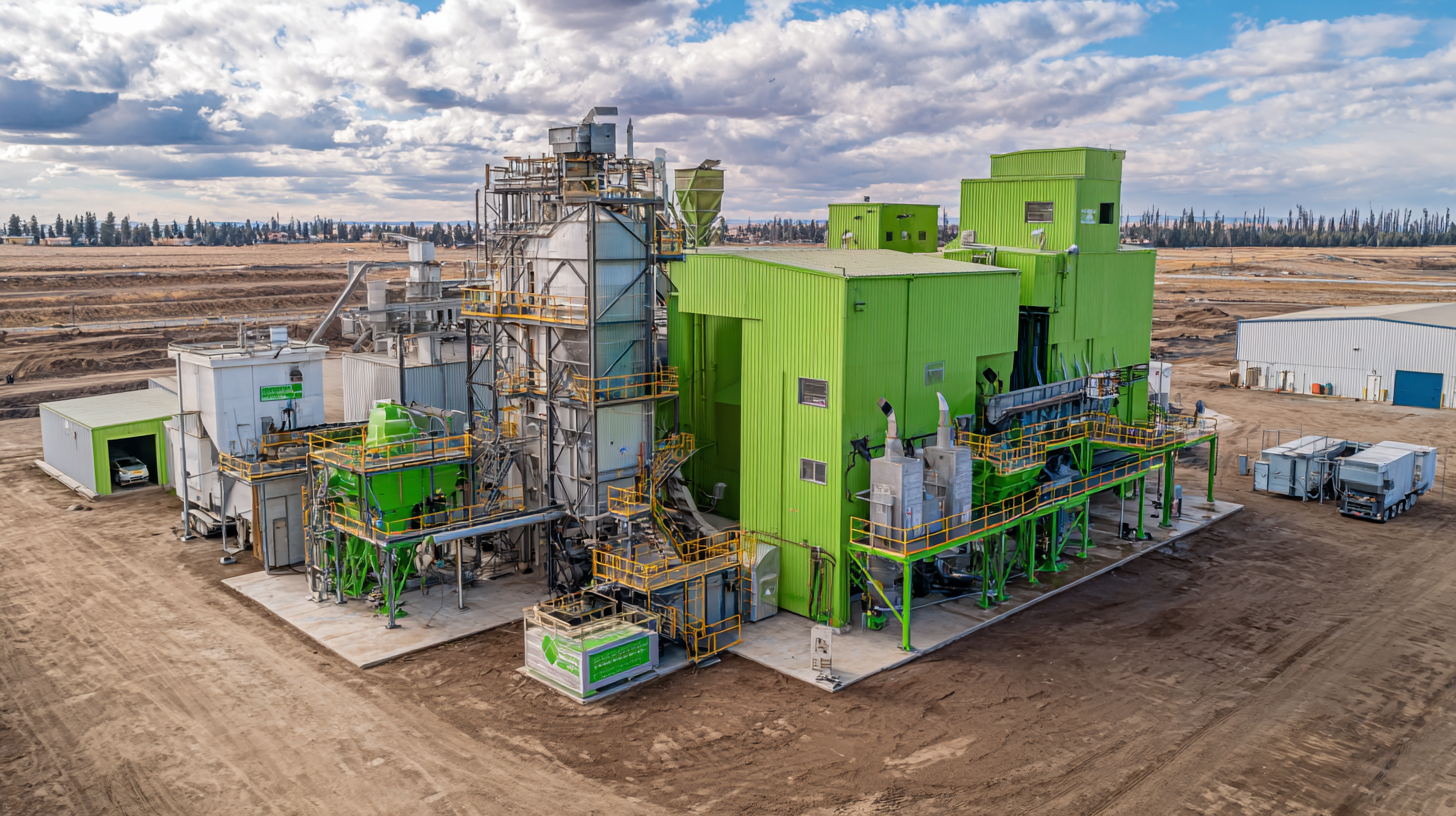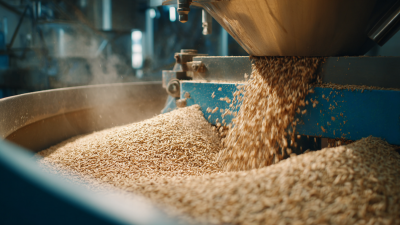Challenges in Livestock Feed Pellet Mill Production: Navigating Quality and Efficiency Issues
Table of Contents
- Understanding the Importance of Quality in Livestock Feed Pellets Production
- Common Quality Challenges in Pellet Mill Production
- Strategies for Improving Efficiency in Livestock Feed Pellet Mills
- The Role of Raw Materials in Ensuring Quality Pellets
- Utilizing Technology to Enhance Feed Pellet Mill Performance
- Best Practices for Regular Maintenance and Troubleshooting
- FAQS
- Conclusion
- Related Posts
The efficiency and quality of Livestock Feed Pellet Mill production have become critical factors in the agricultural sector, especially as the global livestock feed market is projected to reach USD 1,205 billion by 2025, according to industry reports. As producers strive to meet the increasing demand for high-quality, nutritious feed, challenges such as material variability, energy consumption, and pellet durability are becoming more pronounced. Shanghai Zhengyi Machinery Engineering Technology Manufacturing Co., Ltd. (CPSHZY) has been at the forefront of this industry for over 25 years, specializing in the manufacturing of feed processing machinery and pellet mill dies. With a commitment to enhancing production efficiency and ensuring quality, CPSHZY also offers solutions for environmental protection in feed plants and aquaculture farms, addressing the dual need for sustainable practices while enhancing operational performance in the Livestock Feed Pellet Mill sector.

Understanding the Importance of Quality in Livestock Feed Pellets Production
 In the livestock feed industry, the importance of quality in feed pellets cannot be overstated. Quality feed is crucial for the health and productivity of livestock, ultimately impacting the profitability of farmers. According to a report by the Feed Quality Assurance Program, up to 30% of livestock production costs are attributed to feed quality. Inadequate nutrient profiles can lead to health issues in animals, resulting in poor growth rates and lower reproductive performance. Thus, ensuring high-quality feed pellets is essential for maximizing productivity and sustaining healthy livestock.
In the livestock feed industry, the importance of quality in feed pellets cannot be overstated. Quality feed is crucial for the health and productivity of livestock, ultimately impacting the profitability of farmers. According to a report by the Feed Quality Assurance Program, up to 30% of livestock production costs are attributed to feed quality. Inadequate nutrient profiles can lead to health issues in animals, resulting in poor growth rates and lower reproductive performance. Thus, ensuring high-quality feed pellets is essential for maximizing productivity and sustaining healthy livestock.
To navigate quality challenges in feed production, it is vital to focus on ingredient selection and processing techniques. High-quality raw materials should be prioritized, as they directly influence the nutrient density and digestibility of the pellets. Furthermore, employing advanced processing equipment, such as pellet mills with precise temperature and moisture control, can enhance feed quality.
Tips for Improving Feed Pellet Quality:
- Regularly conduct quality checks on raw materials to ensure they meet industry standards.
- Invest in staff training on best practices for pellet production to enhance efficiency and product consistency.
- Utilize additives that promote pellet durability and nutrient preservation, as these can significantly improve overall feed performance.
Common Quality Challenges in Pellet Mill Production
When it comes to livestock feed pellet mill production, ensuring quality is paramount. One of the most common challenges encountered is the inconsistency in pellet quality, often stemming from variations in raw materials.
When the feed ingredients vary in moisture content, particle size, and nutritional value, the resulting pellets can exhibit significant discrepancies in density and durability. This inconsistency not only affects the feed's nutritional efficacy but also impacts the overall health and productivity of livestock.
Another prevalent quality challenge is the occurrence of fines in the final product. Fines are small particles that do not meet the desired size for pellets and can lead to waste and decreased feed efficiency. This issue is frequently linked to inadequate conditioning of the feed before pelleting, which can hinder proper binding during the pelletizing process.
Additionally, ensuring that the die and roller configurations are suitable for the specific feed type is critical; improper settings can exacerbate the production of fines and reduce the overall quality of the feed pellets. Addressing these challenges requires a careful balance of raw material management and process optimization to improve the consistency and quality of livestock feed pellets.
Strategies for Improving Efficiency in Livestock Feed Pellet Mills
In the production of livestock feed pellets, ensuring both quality and efficiency is paramount. Key strategies can help improve efficiency in pellet mill operations. One of the most effective approaches is the implementation of advanced technology, such as high-capacity pellet mills with optimized die designs. These machines not only increase output but also enhance pellet durability and nutritional value. Regular maintenance and timely upgrades to equipment can prevent downtime and maximize production capacity.
Another crucial strategy involves refining the ingredient formulation process. Employing precise measuring systems ensures that feed components are blended in optimal proportions, facilitating smoother processing and reducing waste. Training staff on the best practices in feed handling and processing can also significantly improve operational efficiency. By focusing on employee education and encouraging a culture of continuous improvement, feed mills can better navigate the challenges of quality control while enhancing their overall productivity. These strategies collectively contribute to creating a more efficient and effective production environment, ultimately benefiting both livestock and producers.
The Role of Raw Materials in Ensuring Quality Pellets
The quality of livestock feed pellets is profoundly influenced by the choice of raw materials. Selecting high-quality ingredients is crucial for not only meeting nutritional standards but also for ensuring the longevity and stability of the pellets. It's essential that feed producers pay close attention to the nutritional content, digestibility, and palatability of the raw materials used in production. Common ingredients such as grains, protein sources, and vitamins must be carefully sourced to avoid contamination and ensure uniformity, ultimately leading to a superior product.
Moreover, the consistency of raw materials impacts the overall efficiency of pellet mill production. Inconsistent ingredient quality can lead to variations in pellet size, hardness, and nutrient distribution, which can ultimately affect animal health and growth rates. Feed manufacturers should establish reliable supplier relationships and implement rigorous quality control measures to regularly test raw materials before production. By focusing on the integrity of raw materials, producers can not only enhance the quality of their pellets but also optimize production processes, ultimately leading to more efficient operations and improved animal performance.

Utilizing Technology to Enhance Feed Pellet Mill Performance
The livestock feed industry is facing significant challenges in balancing quality and efficiency in pellet mill production. As reported by the Feed Manufacturing Technology Institute, the demand for high-quality animal feed has risen by 20% in recent years, leading producers to adopt advanced technologies to enhance their performance. Shanghai Zhengyi Machinery Engineering Technology Manufacturing Co., Ltd. (CPSHZY) has been at the forefront of this transformation with over 25 years in manufacturing feed processing machinery and providing innovative solutions.
Leveraging technology is crucial for optimizing pellet mill operations. Incorporating automated systems and precise temperature control can dramatically improve pellet quality while minimizing waste. According to a study by the American Feed Industry Association, feed mills that implemented such technologies saw a 30% reduction in energy consumption and a 15% increase in production efficiency.
Tips: Regular maintenance of equipment can also play a vital role in sustaining optimal performance. Scheduling routine checks of pellet mill dies and ensuring proper lubrication can prevent costly breakdowns. Additionally, investing in staff training on the latest technologies can further enhance productivity, allowing for better adaptation to evolving industry demands.
Best Practices for Regular Maintenance and Troubleshooting
In the realm of livestock feed pellet mill production, ensuring optimal equipment performance is crucial not only for efficiency but also for maintaining the quality of feed. Regular maintenance can significantly mitigate issues such as machine breakdowns and inefficiencies that lead to increased production costs. According to a recent industry report, 70% of pellet mill failures are attributed to lack of proper maintenance and troubleshooting procedures.
To maintain the performance of your pellet mill, implementing best practices for maintenance is essential. Routine checks on critical components like die and roller conditions can help identify wear and tear early. Additionally, maintaining proper lubrication in all moving parts enhances the efficiency and longevity of the machinery. Most importantly, keeping a detailed maintenance log can help operators track performance and identify recurring issues that require attention.
**Tips:**
1. Schedule regular inspections of your equipment to prevent unexpected downtime.
2. Invest in staff training to ensure proper operation and maintenance procedures are followed.
3. Always keep spare parts on hand to quickly resolve any unforeseen equipment failures, thereby minimizing production interruptions.
Challenges in Livestock Feed Pellet Mill Production: Navigating Quality and Efficiency Issues
| Challenge | Impact on Production | Best Practice | Maintenance Frequency | Troubleshooting Tips |
|---|---|---|---|---|
| Inconsistent Feed Quality | Reduces pellet durability and nutritional value. | Implement a quality control system for raw materials. | Monthly review of supplier materials. | Test raw materials for consistency regularly. |
| Machinery Wear and Tear | Causes inefficiencies and increases downtime. | Schedule regular inspections and replace parts as needed. | Every 250 hours of operation. | Keep an inventory of spare parts for quick replacements. |
| Moisture Control | Affects pellet formation and quality. | Use moisture sensors and adjust feed ingredients accordingly. | Daily monitoring of moisture levels. | Calibrate moisture meters regularly for accuracy. |
| Energy Consumption | Increases production costs and reduces profit margins. | Optimize machine settings for energy efficiency. | Quarterly energy audits. | Identify high energy-consuming machines and assess their operation. |
| Operator Training | Inadequate skills lead to operational errors. | Provide ongoing training programs for staff. | Biannual training refreshers. | Conduct hands-on training sessions with new technologies. |
FAQS
: The choice of raw materials significantly affects the nutritional standards, longevity, and stability of the pellets. High-quality ingredients are crucial for ensuring optimal digestibility and palatability.
Common ingredients include grains, protein sources, and vitamins, which should be carefully sourced to avoid contamination and ensure uniformity.
Inconsistent ingredient quality can lead to variations in pellet size, hardness, and nutrient distribution, negatively impacting animal health and growth rates.
Reliable supplier relationships are vital for obtaining consistent quality raw materials, which is essential for enhancing pellet quality and optimizing production processes.
According to industry reports, 70% of pellet mill failures are attributed to inadequate maintenance and troubleshooting procedures.
Best practices include conducting routine checks on components, maintaining proper lubrication in moving parts, and keeping a detailed maintenance log to track performance.
Regular maintenance can mitigate machine breakdowns and inefficiencies, leading to lower production costs and improved equipment performance.
Operators should schedule regular inspections of equipment, invest in staff training, and keep spare parts on hand to quickly address any unforeseen failures.
Proper lubrication of moving parts enhances the efficiency and longevity of the machinery, ensuring optimal performance during production.
Keeping a maintenance log allows operators to identify recurring issues that require attention, helping to improve overall equipment reliability and performance.
Conclusion
In the livestock feed industry, ensuring the quality and efficiency of livestock feed pellet mill production is paramount. The importance of high-quality pellets cannot be overstated, as they directly influence animal health and growth performance. However, common challenges such as inconsistent raw materials, temperature fluctuations, and equipment malfunctions can hinder production. Implementing effective strategies for improving efficiency—such as optimizing the feed formulation and utilizing advanced technologies—can significantly enhance the overall performance of feed pellet mills.
Moreover, the role of raw materials is critical in producing quality pellets; sourcing high-grade ingredients is essential. Regular maintenance and troubleshooting are also vital to prevent equipment breakdowns and ensure smooth operations. Companies like Shanghai Zhengyi Machinery Engineering Technology Manufacturing Co., Ltd. have over 25 years of experience in manufacturing and optimizing feed processing machinery, providing valuable solutions to improve livestock feed pellet mill production, enhance quality, and address environmental concerns in feed plants and aquaculture farms.
Related Posts
-

Exploring Unique Features and Applications of the Best Feed Pellet Machine in Your Operations
-

Unwavering Quality of Chinese Manufacturing in the Leading Pellet Mills for Feed
-

A Comprehensive Tutorial on the Best Animal Feed Pellet Making Machine for Beginners
-

Top Strategies for Enhancing Efficiency in Chicken Feed Milling Operations
-

Unlocking Efficiency in Livestock Management with the Ultimate Feed Mixer Machine
-

Mastering the Best Die Cutting Techniques with In-Depth Technical Specifications and Step by Step Guide
Blog Tags:

